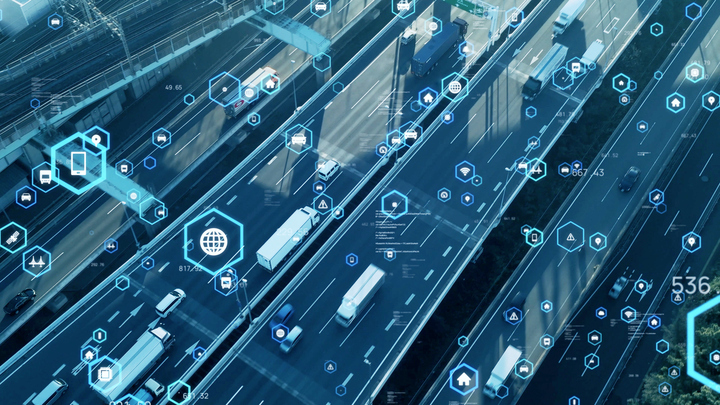The businesses and fleets that operate in logistics, transport and other physical operations are no longer the laggards of the digital world.
Despite being underserved by the enterprise-wide technology platforms that many businesses take for granted, the speed of change is accelerating, fueled by an ever-increasing appetite for data.
While vehicle telematics have been around for years, it is only recently that vehicle sensors and dashboard cameras have been linked together and connected via the cloud to a central enterprise-scale platform.
The advent of the Internet of Things (IoT) technology with high-bandwidth cellular networks has made it possible to stream eye-watering volumes of data in real-time. Meanwhile, efficiencies in Cloud computing and storage have paved the way for artificial intelligence (AI) and automation.
As a result, vehicle fleets, everything from construction firms, field services engineers and delivery drivers, are now part of an IoT ecosystem providing data to help make operations safer, increasingly efficient and more sustainable.
The scale of this connected ecosystem is vast. In fact, it could be argued that the logistics and operations industry is one of the largest and most complex IoT enterprises on the planet.
Data is driving the world of physical operations
Millions of vehicles are driving billions of miles every year, each collecting trillions of pieces of data. While this may sound impressive, these numbers are meaningless on their own.
Instead, its the data they produce, and the insights they provide, that is of real interest.
Sanjit Biswas, co-founder and CEO, Samsara, said: “Our customers are using data and AI on our platform to make the jobs of their frontline workers easier, safer, and more efficient.”
At the recent Beyond Conference in Austin, Texas, Biswas talked about how automation, digital transformation and AI are reshaping the world of logistics and how the momentum for change is unstoppable.
For instance, AI is already being used to automate pen-and-paper processes and workflows used by commercial drivers to make their lives easier. In the office, AI is being used to analyze and organize siloed data to inform better strategic decision-making.
Behind the wheel, AI-powered cameras are detecting safety hazards, such as tailgating or texting while driving, to catch risky behavior before it leads to an accident or crash.
Data isn’t just about number crunching – it can save lives too
Biswas continued: “When you total up all the numbers it looks something like 120,000 crashes that we helped to avoid. Just think about how many drivers lives we changed. And how many communities we made better by keeping those drivers safe.
“When we add up all the trips that are taken by our customers’ vehicles, it looks like about 1.9bn trips every year. That’s a lot of data. And when you connect all that data together you see a number that looks something like 6tn data points. That’s an incredible amount of information that we can use to find insights and change the way our customers operate.”
Making sense of that data, gaining the insights that can drive real business change, is something different altogether. Biswas believes this can only be made possible by brand new technologies like AI and using it as a “co-pilot” for customers’ operations, virtually helping them make their operations smarter, safer, and more efficient.
Physical operations is beyond the tipping point
It’s an industry-changing transformation highlighted in Samsara’s recent State of Connected Operations Report 2023, which revealed that monumental technological shifts are underway within the sector, from autonomous vehicles and AI, to alternative energies, robotics and more.
This is just the start as companies are already looking to embrace virtual reality (VR) and robotics. For instance, Lanes Group, the leading wastewater utility solutions provider and largest independent drainage specialist in the UK, is now using VR to train its staff.
Even before new staff go out on the road, they’re trained using VR goggles so they know exactly what its like to be in a trench working on a broken pipe. Not only can they see what day-to-day operations are like, they can learn about safety procedures without getting their boots dirty.
In the US, ConGlobal, the intermodal container company that moves freight between rail depots, ports and road hubs, has invested in remote-controlled teleoperated trucks and forklifts.
In what’s been described as a game-changer for employees, the firm is now able to remotely operate forklifts or yard trucks from an air-conditioned office. Or they can even do it from a couple of hundred miles away.
“The big advantage is that the job is safer,” as Biswas explained. “If there’s an accident on site, it’s just some bent metal. Nobody’s lives are at risk. And that’s important.
“This is the kind of digital transformation that we are starting to see. And it’s not just these ‘out there’ examples. Businesses are digitally transforming their operations. And it is that enthusiasm to help facilitate the digital transformation of the physical world that is so inspiring,” he said.
But there is still much to do.
While the bigger organizations are already on their journey, there are still numerous businesses still waiting to take their first steps towards digitization. But if the speed of uptake experienced in the last couple of years is anything to go by, it won’t be long until they’re in the digital fast lane.
This blog is sponsored by Samsara.




